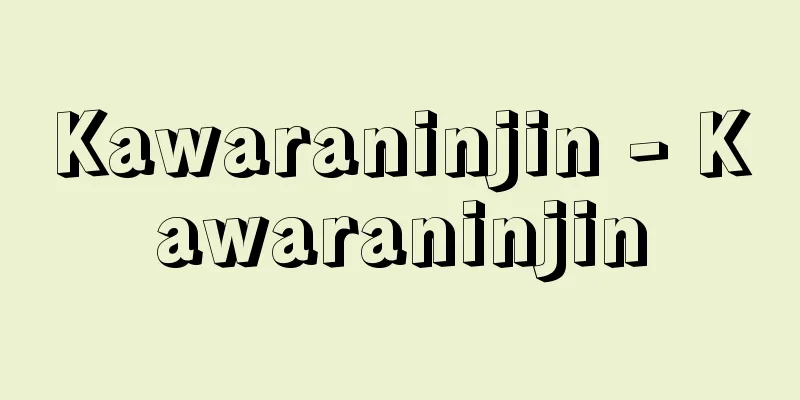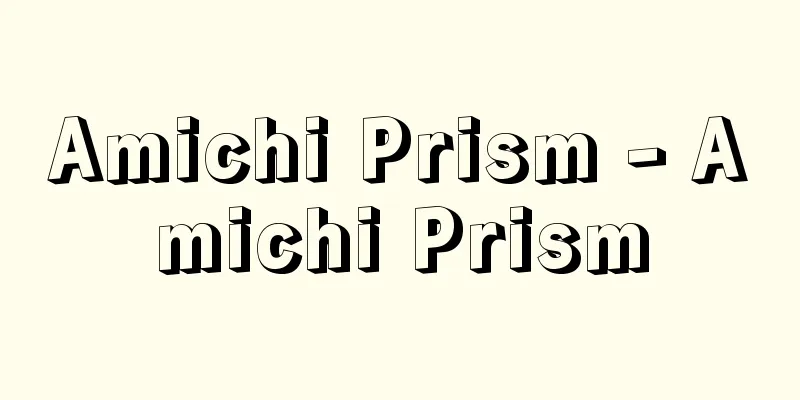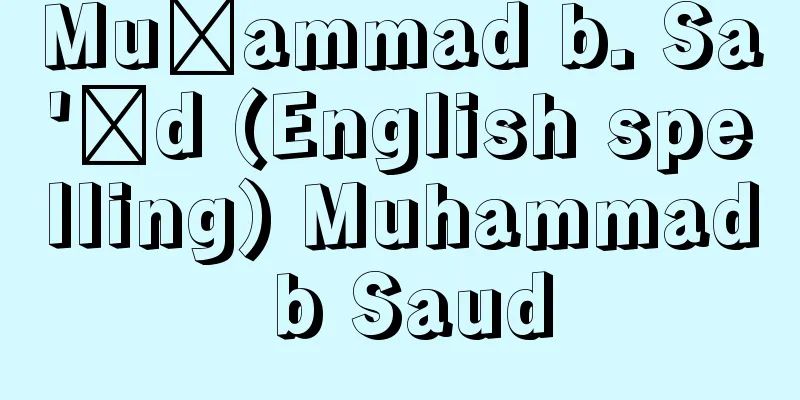Dravidian - Dravidian (English spelling)

|
A general term for people who live in the southern part of the Indian peninsula and speak Dravidian languages. However, it should be noted that they cannot understand each other if they speak a different Dravidian language. The area in which they live is roughly the same as the Japanese archipelago. They tend to be smaller and have darker skin than people in northern India. In the dry inland areas, millet farming is the main practice and the population is generally sparse, but rice paddies are concentrated in parts of the coastal areas, and in the Middle Ages, a group of small Hindu kingdoms was established. Common characteristics of Dravidian societies, such as strong class (caste) relationships, limited intermarriage (especially cross-cousin marriages), and a relatively high status for women, are closely related to the rule of small Hindu kingdoms in the Middle Ages. Dravidian religion, which is a combination of the Brahman (Brahmin) religion of Hindu temples in urban areas and the animal sacrifice and death beliefs of non-Brahman rituals in villages, also has a similar historical background. Emphasizing the unity of Dravidian people, who do not share any obvious traits or cultural commonalities, has been a political trend since the 1940s. The Dravida Kazgan, founded in 1944 in the current state of Tamil Nadu, developed a peasant-led nationalist reform movement, succeeding the Communist Party movement around 1950. In the 1960s, it launched a Dravidian separatist movement together with the Communist Party and the Socialist Party, which escalated into a major security incident. The nationalist party Dravida Munnetra Kazgan (DMK = Dravida Progressive League), which increased its votes by advocating the officialization of Tamil, the main Dravidian language, in opposition to the sole official language of Hindi, and won an outright majority in the Tamil Nadu State Assembly in 1967, is also important when considering the concept of "Dravidia." Dravidian nationalism, which emphasizes the history and culture unique to South India, which is different from the Aryan culture of North India, is a revivalist movement similar to the Hindu Renaissance in North India since the 19th century. The Dravidian nationalist movement emphasizes the continuity from ancient times, stating that the Dravidians are the descendants of people who spread to the peninsula through uncertain routes at an uncertain time before the establishment of ancient North Indian culture. However, considering that archaeological research indicates the establishment of a settled agricultural society in the peninsula and that the megalithic culture, whose relationship with neighboring regions is unclear, dates to several centuries spanning from before the Common Era to the Common Era, that Roman coins have been excavated mainly in the inland area at the southern tip of the peninsula, that place names in South India are scattered in geographical books and travelogues from the same period, and that Dravidian dynasties appeared in the political history of South Asia at the end of the first millennium AD, it is certain that most of the development from the establishment of a settled agricultural society to an urban culture is a post-Christian phenomenon. Another characteristic of Dravidian nationalism is that Dravidian languages are unique and not particularly similar to any other languages. The theory that Dravidian languages are similar to Uralo-Altaic languages in terms of basic words and grammar (especially particles), although they contain many words of Sanskrit origin, has been proposed and developed intermittently since the beginning of the 19th century, but it was completely ignored by the British colonial government in their linguistic research, and as a result of the increasing degree of differentiation in the research of Uralo-Altaic languages, research on the relationship between Dravidian languages and Asian languages has been hindered, and the emphasis on the uniqueness of Dravidian languages has been generally accepted. If we accept the relationship between Dravidian languages and Uralo-Altaic languages and seek the development of South Indian culture after the Christian era, it would be more scientific to seek the cultural origin of people who speak Dravidian languages in the Altaic peoples who migrated south from Central Asia in the centuries around the Christian era than to claim the African origin of Dravidian languages by searching for related languages among the countless African languages. [Akira Sasaki] Source: Shogakukan Encyclopedia Nipponica About Encyclopedia Nipponica Information | Legend |
|
インド半島南部に居住し、ドラビダ系の諸語を用いる人々の総称。ただし、ドラビダ系の異なる言語で会話しても理解が不可能なことに注意すべきである。居住地域は日本列島とほぼ同面積である。北インドの人々に比べて小柄で肌の色が黒い傾向があるとされる。乾燥した内陸部では雑穀耕作が主で、一般に人口が希薄だが、海岸地帯の一部には水田が集中し、中世にはヒンドゥー小王国群が成立した。身分(カースト)関係が強固で、通婚範囲が広がらず(とくに交差いとこ婚が多い)、女性の地位が比較的高い、などのドラビダ系社会に共通する特徴は、中世ヒンドゥー小王国の支配と密接に関連している。都市部のヒンドゥー寺院のブラーマン(バラモン)祭祀(さいし)の宗教と、村落部の非ブラーマン祭祀の動物供犠(くぎ)・死霊信仰とが重合したドラビダ系宗教も同様の歴史的背景をもつ。 形質的・文化的な共通性が顕著でないドラビダ系の人々の一体性を強調するのは、1940年代以降の政治的傾向である。1944年に現タミル・ナド州で結党したドラビダ・カズガンが1950年前後の共産党運動を継承する形で、農民主体の民族主義的改革運動を展開し、60年代に共産党・社会党とともにドラビダ分離独立運動を展開し、大治安事件にまで発展した。ヒンディー語の単独公用語化に対してドラビダの主要言語であるタミル語の公用語化を主張して得票を伸ばし、67年にタミル・ナド州議会の単独過半数を獲得した民族主義政党ドラビダ・ムネトラ・カズガン(DMK=ドラビダ進歩連盟)も「ドラビダ」の概念を考えるうえで重要である。 北インドのアーリア系とは異なる南インド固有の歴史・文化を強調するドラビダ民族主義は、19世紀以来の北インドのヒンドゥー・ルネサンスに類似する復古主義運動である。ドラビダ民族主義運動では、北インド古代文化確立以前の不確定な時期に、不確定な経路を通って半島部に拡散した人々の子孫がドラビダ人であるとして、古代からの連続性を強調する。しかし、考古学的研究が、半島部の定住農耕社会の成立指標であり、隣接諸地域との関連の不明な巨石文化の年代を紀元前から紀元後にまたがる数世紀としていること、ローマ時代の貨幣が半島南端内陸部を中心に出土し、同時代の地誌・旅行記に南インドの地名が散見すること、ドラビダ系諸王朝が南アジアの政治史に登場するのが紀元後一千年紀の末であることなどを総合すると、定住農耕社会の成立から都市文化への発展過程のほとんどが紀元後の現象であることは確実である。 ドラビダ系諸語が他のいかなる言語ともとくに類似しない独特な存在であるとするのがドラビダ民族主義のもう一つの特徴である。ドラビダ系諸語がサンスクリット起源の語を多く含みながら、基本語および文法(とくに助詞)上、ウラル・アルタイ系諸語に近似するとの説が19世紀初めから断続的に提唱・発展したが、イギリス植民地政府の言語研究では完全に無視され、他方ウラル・アルタイ系諸語の研究が分化の度合いを深めた結果、ドラビダ系諸語とアジアの諸言語の近縁関係の研究が阻害され、ドラビダ系諸語の特異性強調が一般に受け入れられている。ドラビダ系諸語とウラル・アルタイ系諸語との近縁関係を認め、南インド文化の発展期を紀元後に求めるなら、ドラビダ系諸語を用いる人々の文化的起源を紀元前後の数世紀間に中央アジアから南下したアルタイ系諸民族に求めるのは、無数のアフリカ諸語から近縁言語を探してドラビダのアフリカ起源を主張するよりは科学的であろう。 [佐々木明] 出典 小学館 日本大百科全書(ニッポニカ)日本大百科全書(ニッポニカ)について 情報 | 凡例 |
>>: Trappist Order (English: Ordo Cisterciensium Reformatorum, Latin)
Recommend
House sitter - House sitter
An office established to manage and ensure the saf...
Earthworm (earthworm) - Earthworm (English spelling)
A general term for annelids in the class Oligochae...
Shinano [town] - Shinano
A town in Kamiminochi County in northern Nagano Pr...
Pine bark beetle (pine-eating insect) - Pine bark beetle
A general term for insects that damage pine trees....
Dryopteris dilatata (English spelling)
…[Shigeyuki Mitsuda]. … *Some of the terms mentio...
Yamazukari - Yamaazukari
In ancient and medieval times, this was the name o...
Sense of smell
It is a chemical sense that arises when gaseous c...
Digger-wasp - Digger-wasp
A general term for the genus Sphex , a hunter wasp...
Kannonyama Tomb - Kannonyama Tomb
This keyhole-shaped tumulus is located in Watanuki...
Balloon observation - Kikyukansoku
Observing winds in the upper atmosphere using a b...
Tiber [river] - Tiber
A river in central Italy, it originates in the Ape...
Lock - Komon (English spelling) lock
A structure that allows ships to pass between wat...
FIDE - FIDE
...Famous geniuses in history include Paul Morphy...
Chain transfer reaction
…For example, a hydrogen atom of the solvent SH i...
Daigo Ikeda
Playwright. Born in Tokyo. Real name Ginjiro. Aft...









